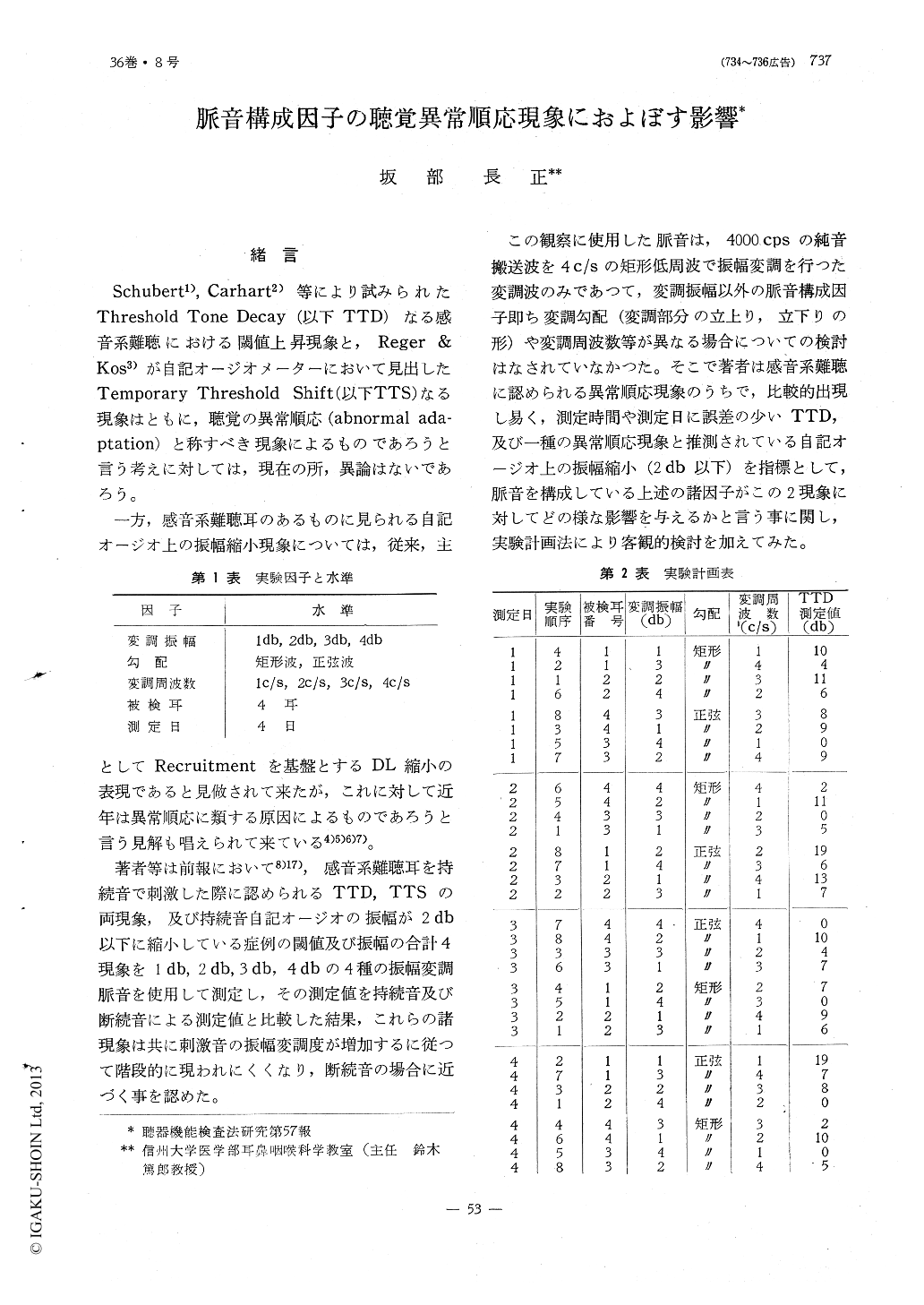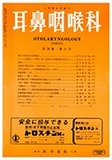Japanese
English
- 有料閲覧
- Abstract 文献概要
- 1ページ目 Look Inside
緒言
Schubert1),Carhart2)等により試みられたThreshold Tone Decay(以下TTD)なる感音系難聴における閾値上昇現象と,Reger & Kos3)が自記オージオメーターにおいて見出したTemporary Threshold Shift(以下TTS)なる現象はともに,聴覚の異常順応(abnormal adaptation)と称すべき現象によるものであろうと言う考えに対しては,現在の所,異論はないであろう。
一方,感音系難聴耳のあるものに見られる自記オージオ上の振幅縮小現象については,従来,主としてRecruitmentを基盤とするDL縮小の表現であると見做されて来たが,これに対して近年は異常順応に類する原因によるものであろうと言う見解も唱えられて来ている4)5)6)7)。
In order to investigate the influence of the pulsating factor on the threshold tone decay a study plan was based on amplitude of modulation and the inclination of modulation. Analysis in the results obtained in the testing on patients with nerve deafness with threshold tone decay and decreased amplitude by Bekesy type audiometer as guides.
(1) It is found that threshold tone decay is influenced by modulated amplitude and inclination of the factor of pulsation. Appearance of threshold tone decay become less apparent with rectangular modulation than that of the sine wave and also with the increase in the amplitude of modulation with both rectangular and sine wave.
(2) For a decrease in amplitude the modulated amplitude of the pulsating tone hasa significant influence; the amplitude becomes larger as the degree of the modulated amplitude becomes increased. In this case, however, inclination has no influence whatsoever.

Copyright © 1964, Igaku-Shoin Ltd. All rights reserved.


